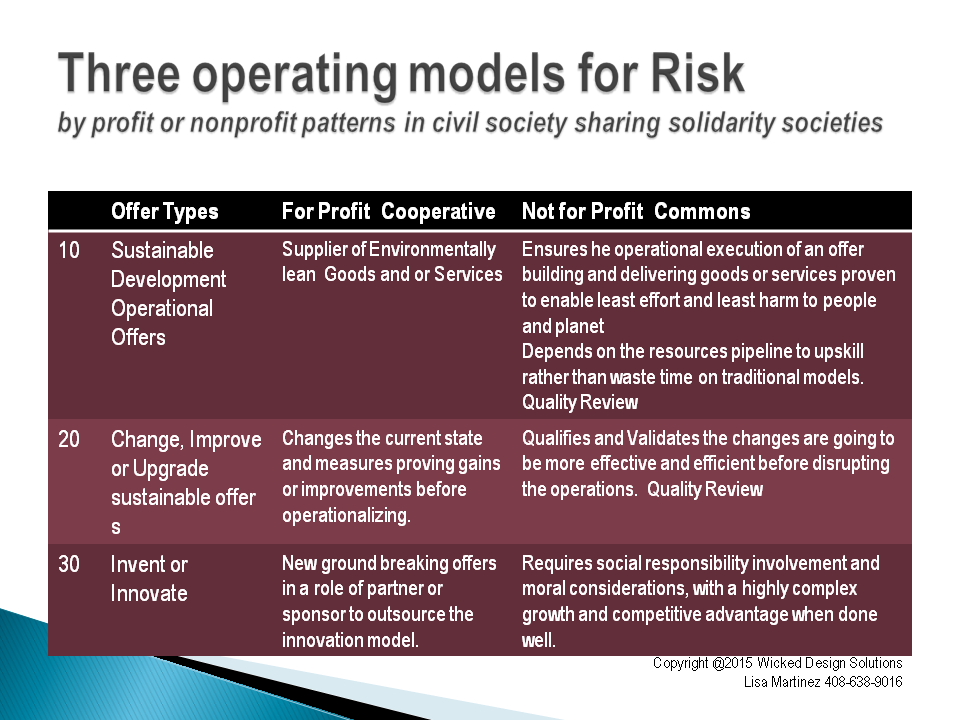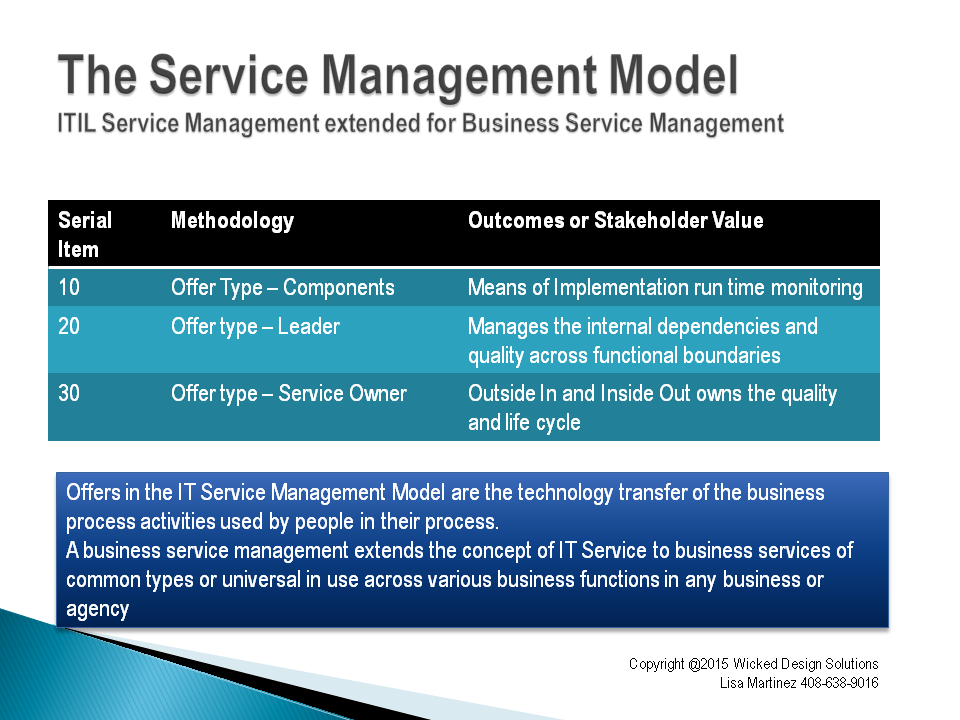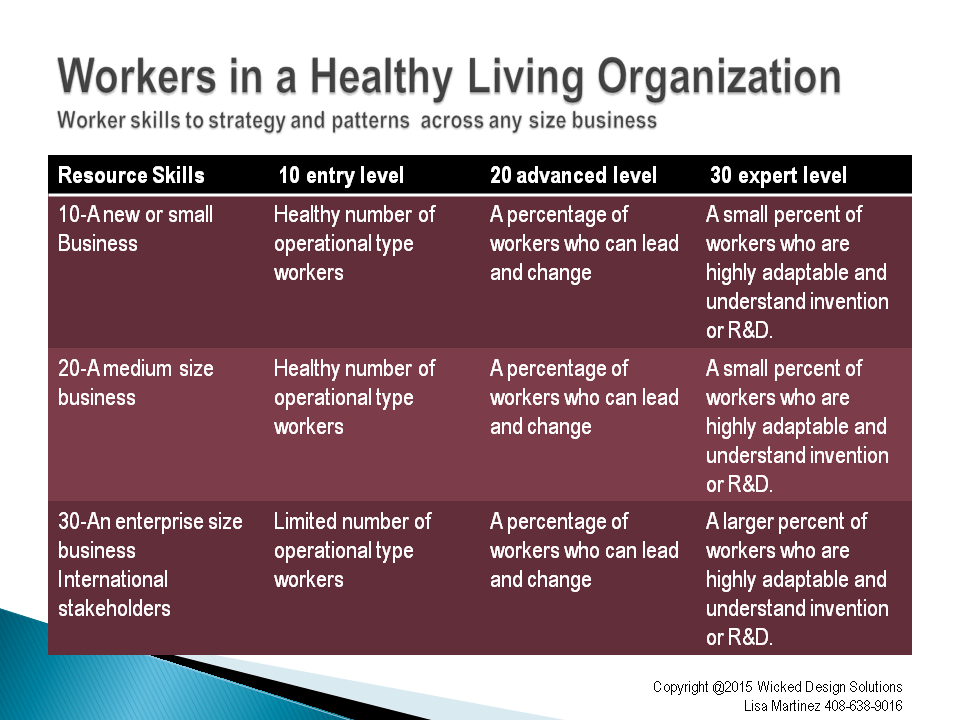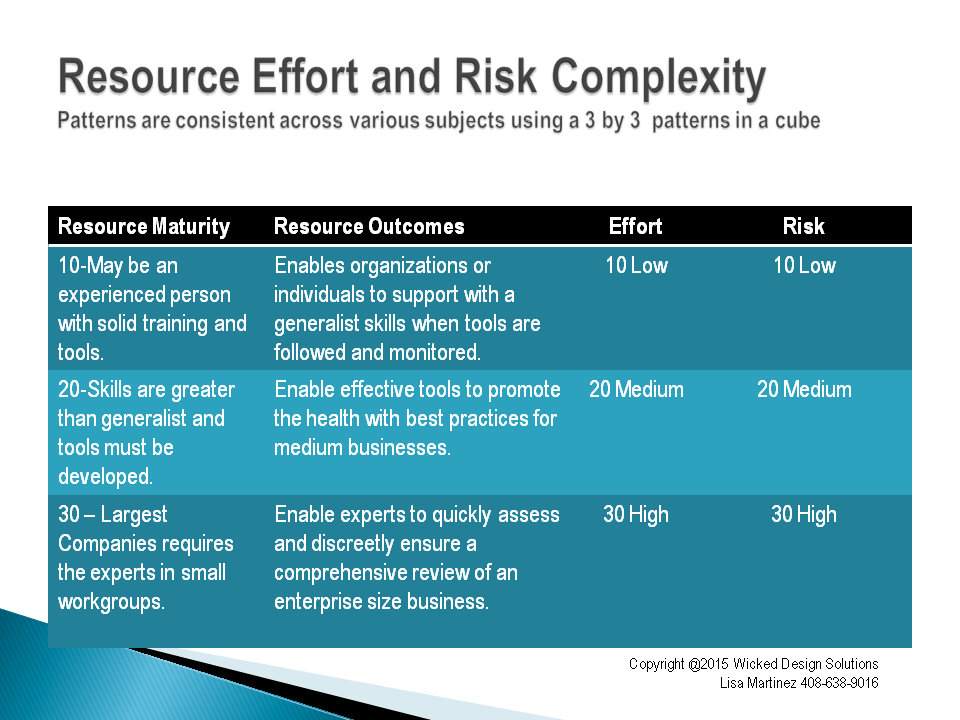2 Change and Continuously Improve
Category 20 design pattern which moves anything intended to change out of disruption to running or operating. Once the changes are proven we reward upon reentry to category 10.Merge from 10 or mature from 30 into 20 Innovation to change category 20 Business Change Policies and people change must be measured to validate the success of initiatives and in order to measure the performance of leaders and people managers at all levels of the organization or agency.

The above graphic provides a design pattern with associated behaviors
The next graphic shows how IT Service Management models have a design pattern which applies to the above graphic.
What this allows us to understand is the behaviors which are similar across two different lines of business within an organization. The same is true regardless of the size of a business/organization and across organizations into an enterprise anywhere in the world. Yes, these design patterns are multi-national and across business sectors and industries.

What if we wanted to apply the practices of project, program and portfolio to the 3 categories in the same design pattern.
Projects are pretty straight forward. Repeatable and operational for the most part. Parts associated with change (business change) are typically changed at the program level. Which is where the programs are categorized in terms of design patterns. Resource types change in every way. People managers are at the program level and should be measured for success in a change lane or category. Project Managers have some of this responsibility but defer to people managers in all cases where there might be resistance. Change and Improve category 20 implies an investment beyond the running of an operation, but we must always remember the one time investment of change would need to also factor in the ongoing operations cost once the change is in place. This would be a decision factored at the program level.

Resource skill types are different in the change or improve category people understand change as it relates to what workers do today in the operations or running category. These workers are high performers and people managers. People managers are the accountable roles for business change. Change and improve work is short term investments with returns we can celebrate as these changes and improvements come through as strategy decisions.
Portfolio is long term investments with fewer returns in the short term which needs to be separated with the resources having the expert skill sets which we want to understand and manage without the same expectations of resources who are generalist(category 10) or people managers(category 20). In times of budget cuts its always the people managers decision to cut an expert before losing two generalist. This isn't a good idea. Too many generalist and people managers leaves your organization exposed to decision making without the understanding of the whole organization or enterprise which an organization is a part of.
Risk and complexity by resource types using the same 3 categories showing the effort and complexity the resources need to be able to work within.

Let us move from the inside out perspective to an outside in view with partners and distributors or customers based on size. Both can be aggregated differently than you do today or in some cases you are running this way trying to get these design patterns to show themselves better within an operating model that is designed for your small businesses and partners. These two types are best operated in a marketplace. More than one marketplace ideally we expect our small and partners to run pretty effectively if given the right space to be successful.
